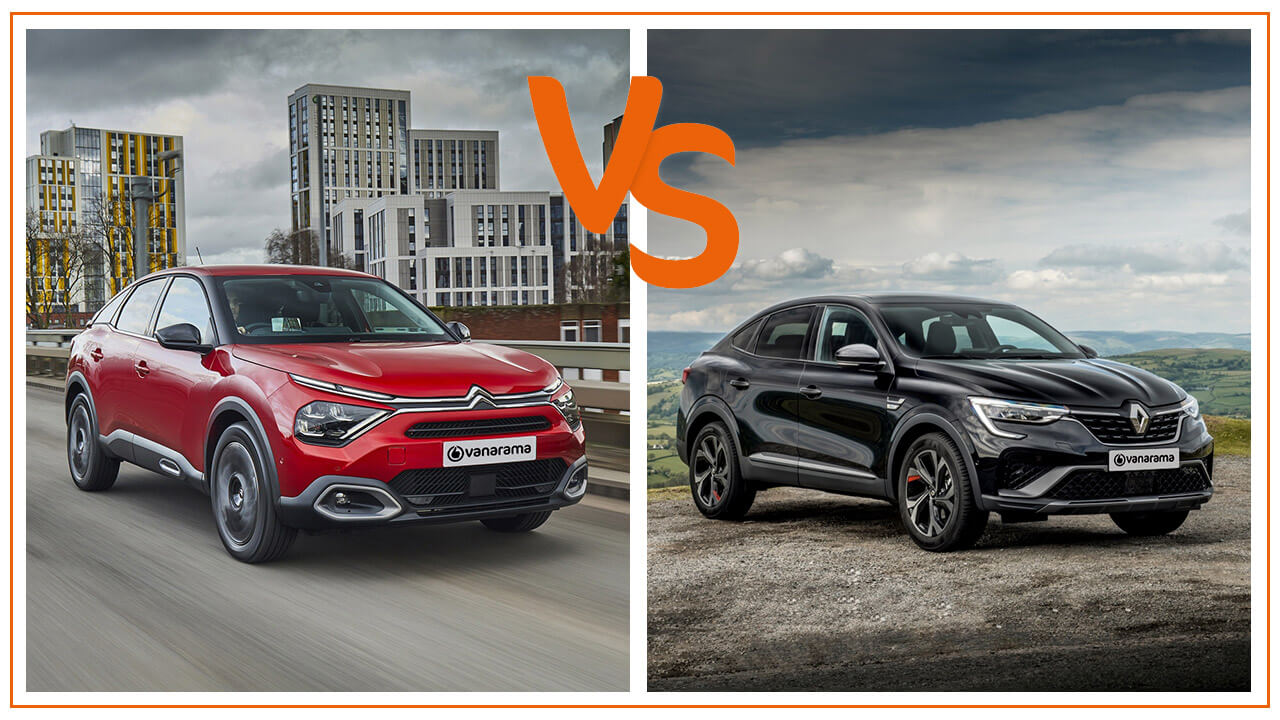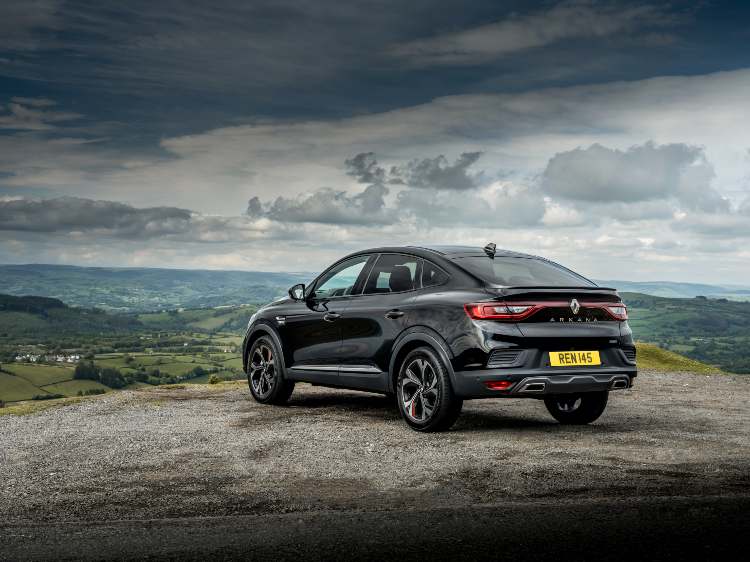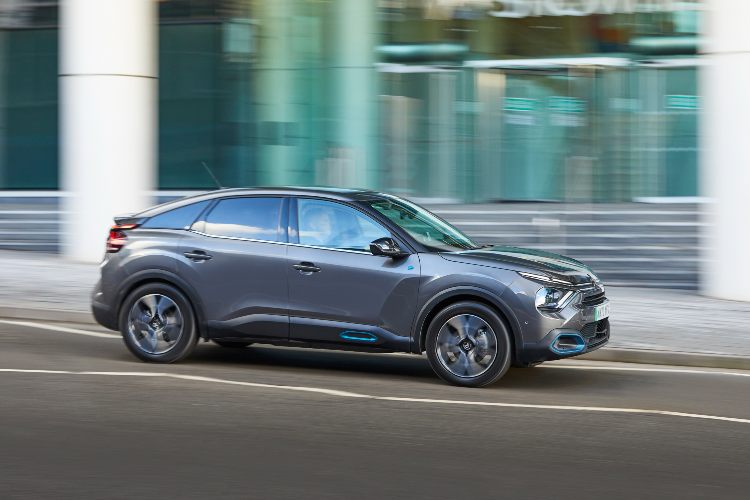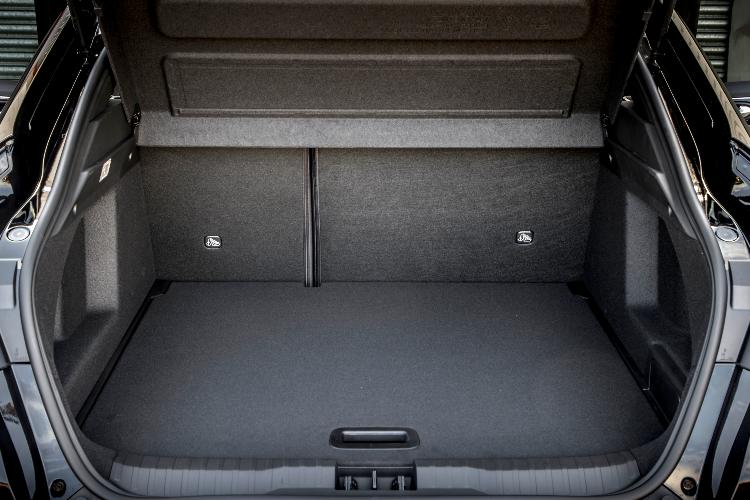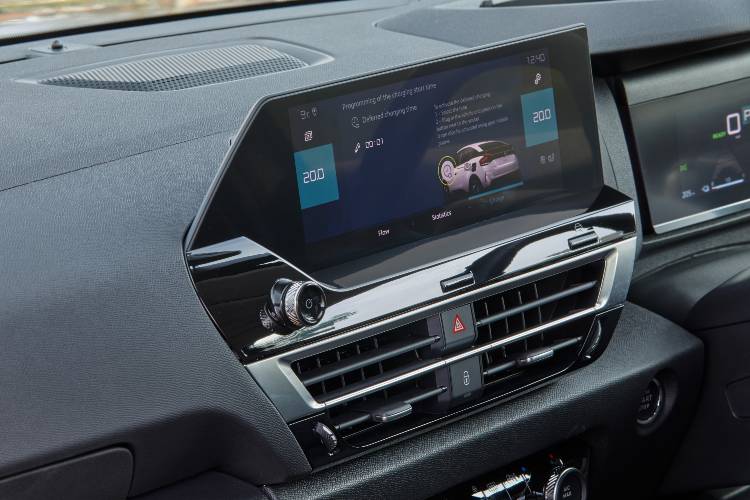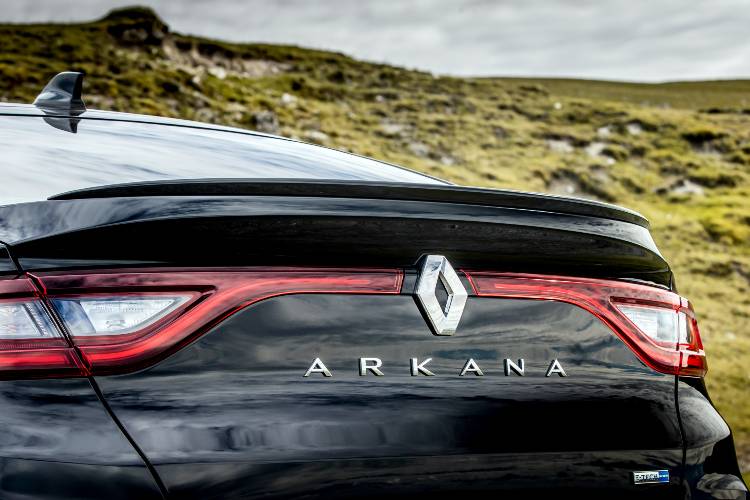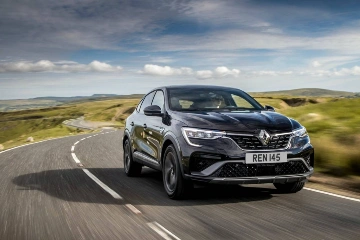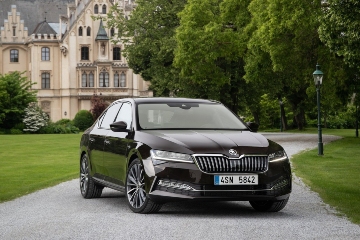It’s French coupe-crossover-hatchback-SUV-type things this time around, as the funky-looking Citroen C4 takes on the Renault Arkana. But which of these quirky motors should you pick? Time to find out.
Design Differences
The Citroen C4 has been built as a Volkswagen Golf-sized hatchback that just so happens to ride a bit taller and look rugged, whereas the Renault Arkana was conceived as a full-on coupe SUV, only it is available at a much more affordable price than some similar premium machines of the same ilk, such as the BMW X4.
To that end, what’s unusual about the Arkana is that, while it is physically big on the outside and priced about on par with the grander Renault Kadjar SUV, it is in fact based on the smaller Renault Captur crossover underneath. Yet the Citroen, as its name suggests, was always intended to sit in the C-segment, one class bigger than the Captur.
However, the Arkana is actually considerably larger than the C4. It’s more than 20cm longer from nose to tail, 21mm wider, almost 50mm taller, and has a wheelbase that is 50mm greater than that of the Citroen. All of this is going to mean more interior space, which we’ll come onto later in the review, but there’s another benefit to the Arkana – its styling is simpler and potentially less divisive than that of the C4. While the latter is a riot of dramatic details, the Arkana is a little more reserved – possibly a little classier to look at.
The cabins are a little more equal. Both interiors are well built, nicely laid out and come with plenty of equipment. The Citroen’s interior is arguably more striking and standout, meaning the Renault could gain more widespread approval owing to its clearer, less fussy layout.
Driving Differences
Again, there’s clear water between the 2 in this regard, which is partly down to the physical differences between them (1 being a raised-height hatchback and the other being a coupe-SUV), and yet is also because the motive power is quite different on both.
The Renault takes a seemingly more technological approach to drivetrains. It offers just 2 in the Arkana. There’s a 1.33-litre turbocharged 4-cylinder petrol with mild hybrid technology, known as the 140 TCe MHEV, and then there’s the E-Tech Hybrid 145. This has a 1.6-litre 4-cylinder petrol engine plus a couple of electric motors, which altogether serve up 142hp and peak torque of 250Nm (which comes from the electric motors – the petrol has 148Nm). The E-Tech also has a trick 6-speed ‘clutchless’ dog-box automatic, which Renault say uses F1 technology. The TCe MHEV, meanwhile, uses a more conventional 7-speed dual-clutch automatic. Both models are front-wheel drive only.
For the Citroen, there are 2 basic engines which are then split into 5 different specifications. The 1.2-litre 3-cylinder turbocharged petrol, known as a PureTech, comes with either 101-, 131- or 155hp, while the 1.5-litre 4-cylinder turbodiesel, known as BlueHDi, is offered with either 110- or 131hp. All of these drive the front wheels alone, with the lowest-powered petrol and diesels only fitted with a 6-speed manual, while the highest-powered versions of both engine types come with an EAT8 8-speed automatic as standard. The only car which has a choice of transmission is the 131hp PureTech petrol, which comes with the 6-speed manual as standard but can be equipped with the EAT8 for an extra fee.
There is a ‘third way’ with the C4, however, which is the all-electric e-C4. This junks any form of internal combustion for a 100kW (136hp) electric motor and 50kWh battery pack. The maximum range is up to 219 miles and, apart from the 155hp PureTech, it’s 1 of the faster models of C4 available.
It’s also the heaviest, though, and by some distance too, which means it doesn’t ride with quite the same grace and fluidity as the regular petrol and diesel models. And these, with their Progressive Hydraulic Cushion suspension, are wonderful to travel in. OK, so the C4/e-C4 will never be the sharpest thing in the corners – its body moves around way too much on its supple suspension for that – but the way it covers ground with effortless ease is remarkable. Few things in this sector can match it for ride comfort and refinement, and the same is true of the Renault Arkana. The Renault has firmer ride quality than the C4 but better body control, so on a twisty road it’s better to steer. You can find out more about the Arkana's handling in our in-depth Renault Arkana review.
Which Is More Practical?
The Arkana’s larger body equates to a roomier cabin, with less of a feeling of rear headroom being impinged upon by the sloping roofline. It also has a bigger boot, with the E-Tech Hybrid claiming between 480 and 1263 litres, depending on the position of the rear seatbacks, while the TCe MHEV packs in 513 to 1296 litres. By comparison, the C4 has 380 litres with all 5 seats in use and a maximum 1250 litres of cargo capacity with the second row of its chairs folded away.
Beyond that, both have generally good practicality throughout the cabin, with plenty of useful storage spaces, cupholders and other stowage solutions. Sadly, like most right-hand-drive French cars, their gloveboxes are compromised, with half the space blanked off – although the Citroen somewhat compensates for this with a clever pull-out drawer arrangement in the passenger fascia. Overall, they’ll both serve any family of 4 or 5 well as a main car.
Running Costs Comparison
Neither car is going to break the bank to run, although – because of its use of hybrid technology – Renault’s Arkana looks the more efficient on a petrol-v-petrol basis. The Arkana TCe MHEV 140 will do between 47.9-48.7mpg, with CO2 outputs of 131-133g/km, while the E-Tech Hybrid 145 improves those numbers to 56.5-57.6mpg and 111-112g/km. The PureTech C4s can’t quite match those highs, but an overall 44-55mpg bracket and CO2 numbers of just 120-145g/km are not to be sniffed at.
However, where the Citroen really fights back in this regard is with its diesel and electric options – 2 things the Arkana doesn’t have. Either of the BlueHDi models of the C4 will turn in between 59.1-69.1mpg, but of course the e-C4 is the clear winner in this category. It’s zero-emissions and will do up to 219 miles on a single charge of its 50kWh battery pack, which can take as little as 30 minutes to recharge to 80% on a DC 100kW connection, or only 7 hours 30 minutes on a 7kW AC wallbox. That means it will easily go from 0-100% charge overnight if you install a wallbox at your residence and remember to plug it in when you get home from work; the car will then be fully juiced up ready for the next morning’s commute.
Are There Any Electric Or Hybrid Versions?
All versions of the Renault Arkana are hybridised in some regard, although the TCe MHEV (mild hybrid) only uses its electrified components to save a tiny bit of fuel. You can’t drive this version of the Arkana on electric power alone. If you want to do that, you’ll need the technically intriguing E-Tech Hybrid. Renault hasn’t (as yet) provided a more capable plug-in electric version of the Arkana, as many crossover-SUV rivals tend to do.
The Citroen C4 initially looks more prosaic, as it comes with an array of 3- and 4-cylinder turbocharged petrol and diesel engines, and no hybrid technology at all – be that mild or ‘full’. However, the ace up its sleeve is the fact that, as we’ve already said, there is an almost-visually-identical e-C4 model. This can also charge up at a maximum rate of 100kW DC on its CCS Combo 2 connection. So while the Arkana is all-hybrid across the range, it’s the Citroen which takes the honours here thanks to its full EV option.
The Vanarama Verdict
Citroen C4 = 8/10
Renault Arkana = 7/10
Both of these vehicles would make fine family motoring and, if its outright practicality you want, or you prefer a slightly sharper-handling vehicle, it’s the Renault Arkana you should choose. Its bigger body results in more cabin space and a considerably larger boot, even if you go for the E-Tech Hybrid, while its suspension is better geared-up to keep the tall shell in check if you decide you’re going to throw it down a quiet back road.
However, because of its super-comfortable ride and its more refined drivetrains, it’s the Citroen we’d recommend first and foremost here. Any model is incredibly simple to drive and supremely composed to travel in, especially if you do lots of motorway miles. The e-C4 is an excellent electric vehicle, too, requiring no significant compromises in terms of its interior space and storage compared to the petrol and diesel versions. So if you want a swoopy-looking French motor at an affordable monthly leasing price, we’d say it’s the hatchback you ought to lean towards, although the coupe-SUV is definitely still well worth checking out.
Take the winner for a ride with our Citroen C4 lease deals, or find out more about a Renault Arkana lease here. New to car leasing? Find out more with our handy car leasing guides.

